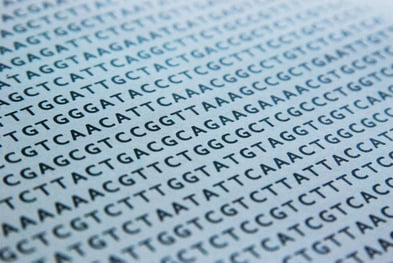 What does it mean for an NGS assay to be bulletproof and why does your lab need it?
What does it mean for an NGS assay to be bulletproof and why does your lab need it?
In two previous blog articles (parts one and two), we’ve talked about the factors that go into making NGS assays that doctors can rely on to deliver targeted, lifesaving therapies to their patients. Bulletproof assays are the tests that make your lab a trusted name in the NGS field, a leader in a rapidly-growing market.
But, as we’ve written, genetic sequencing is complex, expensive, and time-consuming. Therefore, finding ways to do it more efficiently, while maintaining the quality of your tests, is in the best interests of your lab and its customers.
As a refresher, here are the three steps for building a bulletproof clinical NGS assay:
- Consulting with experts
- Outlining your validation and quality control (QC) strategies together
- Evaluating reference material options
We’ve already covered the first two steps. In this article, we’ll look at the third one. Choosing the right reference material technology can help control the high validation and running costs of highly multiplexed assays.
By the Numbers: The Cost of Assay Development
NGS technology for cancer applications will typically assay 50 or more genes, hundreds of variants, and dozens of actionable mutations across multiple tumor types and sample types.
Recent guidelines published by the Association for Molecular Pathology and College of American Pathologists provide an equation to determine the number of samples needed to verify reliability and confidence intervals. For example, according to the equation, 95 percent confidence and 95 percent reliability require 59 or more samples during validation to estimate false positives.
For illustrative purposes, what are the assay costs to test 59 samples?
One 2016 study found that average cost for a 50-gene panel is $691. So, running 59 samples costs $40,780, a significant investment for any lab.
Balancing Costs With Variants
Considering these costs, what would be the ideal control material to test alongside patient samples during validation and in preparation for QC management?
If you use a cell line, a cell line mix, or remnant patient samples, then just a fraction (up to five or so) of the driver mutations will be detected. Furthermore, as the authors of the AMP-CAP guidelines state, testing patient samples will detect mostly SNVs and likely will not include many of the more difficult insertions or deletions.
How do you balance detecting multiple types of variants (such as SNVs, indels, fusions, and copy number variants) with controlling costs?
One approach is to choose a control technology that contains highly multiplexed, biosynthetic NGS reference materials. Biosynthetics provide your lab the added advantage of in silico design to test for rare or difficult-to-detect variants in a highly multiplexed sample.
How Biosynthetic Reference Material Will Get You More Data for Less Money
The assay cost per variant is very high for cell lines and much lower for biosynthetic controls.
At SeraCare, we use a spike-in-technology that has been extensively validated as a reference material and has been recently published in a successful inter-lab study. This technology has been multiplexed for up to 40 mutations in a Seraseq DNA mix (SNVs, indels, structural variants, or CNV gains) and up to 16 mutations in a Seraseq RNA fusions mix.
The assay cost to detect a variant in a cell line reference material can range from $691 for one cell line to $138 for a five cell line mix. The assay cost per variant for Seraseq multiplex control is $17 per variant for the 40-plex product or $43 per variant for the 16-plex product.
In addition to saving your lab money, multiplexing dramatically increases the data sets for statistical analysis and assay performance. This validation data becomes the foundation for an effective QC management system when the assay goes live.
Finally, the biosynthetics can be used during validation and as substitutes for extremely rare variants (MET exon 14 skipping) or difficult-to-detect variants (FGFR3 c.746C>G).
MET exon 14 skipping is provided in the Seraseq RNA fusions control, and FGFR3 c.746C>G is provided in a Seraseq DNA mutation mix control.
In summary, compared to cell lines, multiplex controls and reference materials will help your clinical lab gain significantly more technical performance data in a more cost effective manner.
Now You’re Ready to Build a Bulletproof Clinical NGS Assay
Over the course of the last three blog articles, you’ve learned the affordable way to create a high-performing, reliable NGS assay.
To review, to create a bulletproof clinical NGS assay, follow these three steps:
- Lean on experts who’ve successfully brought clinical NGS assays to validated and operational status.
- Design the validation and QC plan together to achieve the highest performing assay.
- Control the high costs of validation through the smart use of reference material technology. Biosynthetic reference materials are often the most cost-effective.
If you’re intrigued by the idea of using biosynthetic, patient-like NGS reference materials, read our recent whitepaper, “How to Develop a Clinical NGS Assay Without Losing Your Mind or Your Shirt.”
The paper will show you how biosynthetic NGS reference materials can save your lab the time and money of tracking down rare variants. You’ll also learn how they can help you ensure your NGS tests detect what you want them to detect. For your free copy of the whitepaper, click below.





